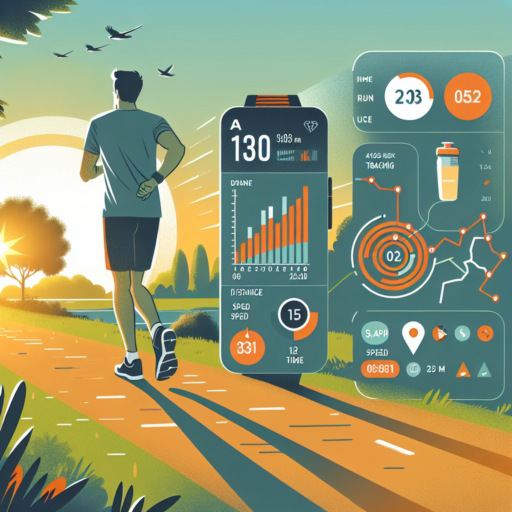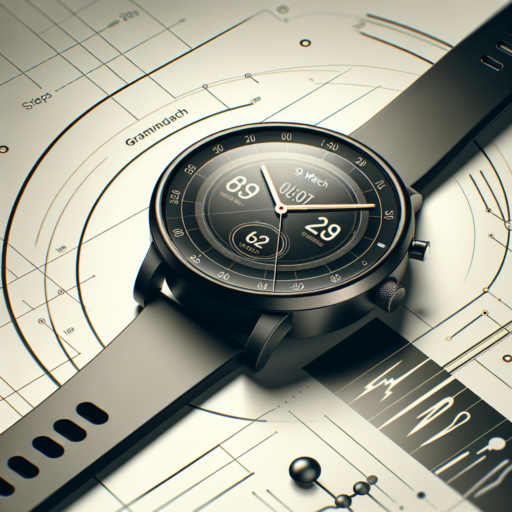No se han encontrado productos.
What is the easiest way to track a run?
One of the simplest methods to track a run is by using a dedicated running app on your smartphone or wearable device. These applications use your device’s GPS to accurately measure your distance, pace, calorie expenditure, and time. Many of these apps offer additional features like route planning, social sharing, and personalized training plans, making them a comprehensive tool for runners of all levels.
Another easy way to track your run is by wearing a GPS watch. Designed specifically for runners, these watches not only track your location but also monitor your heart rate, analyze your running form, and even suggest recovery time. The GPS watch is a favorite among runners for its accuracy and the convenience of having all your running metrics on your wrist.
For those who prefer a more simplified approach, using a basic pedometer or a fitness tracker can be the way to go. While not as detailed as GPS watches or smartphones, these devices offer a straightforward measure of your steps and distance. They’re a great option for runners interested in tracking their run without the complexity of additional features.
How do I track a run on Google Maps?
Tracking your run on Google Maps is simpler than you might think, and it can be incredibly useful for monitoring your fitness progress or planning future runs. Google Maps itself doesn’t directly offer run tracking functionality, but you can use it in conjunction with other tools to keep track of your activities efficiently.
Using Third-Party Apps with Google Maps Integration
To start, many fitness apps like Strava, Runkeeper, and MapMyRun offer seamless integration with Google Maps. These apps utilize the detailed mapping data from Google to help you plot your runs, set routes, and even discover new paths. Once you’ve completed your run, these apps will display your route, complete with metrics such as distance, pace, and time, overlaid on Google Maps. This makes it easy to visualize exactly where you’ve been and how far you’ve gone.
Creating Custom Routes in Google Maps
While Google Maps isn’t primarily a fitness app, it’s still possible to use it to plan your runs by creating custom routes. You can do this by opening Google Maps, selecting your start and endpoint, and then dragging the route to include specific roads or trails you want to run on. Though this method doesn’t track your run in real-time, it can be an excellent way to plan and save your preferred running routes for future reference.
Remember, tracking your run on Google Maps through these methods can add a new dimension to your training, allowing you to explore new areas and keep a tangible record of your progress. With the combination of Google Maps and your favorite fitness app, you’ll be well-equipped to take your running to the next level.
How do I track running routes?
Tracking your running routes is not only beneficial for monitoring your progress but also helps in planning your workouts more efficiently. With the advent of technology, there are several methods to track your running paths accurately.
Using Smartphone Apps
The easiest and most accessible way to track your running routes is by using smartphone applications. Apps like Strava, MapMyRun, and Nike Run Club are designed to help runners record their distance, pace, elevation gain, and route map in real-time. These apps use the GPS functionality in your smartphone to plot your route on a map as you run. The interactive nature of these applications also allows you to save your routes, share them with friends, and even discover new routes shared by other users.
Wearable GPS Devices
For those preferring to run without carrying a smartphone, wearable GPS devices offer a convenient alternative. Devices from brands like Garmin, Polar, and Suunto are popular among runners. These wearables not only track your route but also monitor heart rate, steps, and overall activity levels throughout the day. After your run, you can sync the device with its respective app or software on your computer to review your route and performance.
Online Maps and Tools
Lastly, for runners who plan their routes ahead of time, online maps and tool websites can be incredibly useful. Websites such as Google Maps or MapMyRun’s route planner allow you to manually plot your running route before you head out. This method is particularly helpful for calculating the distance of a planned route or exploring new areas. Additionally, it can provide an estimated time of completion based on your average pace.
Utilizing these tools not only enhances your running experience but also provides a plethora of data to help improve your performance and achieve your fitness goals.
How do I track my run on my Iphone?
Tracking your run on your iPhone has never been easier, thanks to the plethora of apps available that cater to the needs of novice and seasoned runners alike. Among the most popular options is Apple’s own Health app, which comes pre-installed on all iPhones. This app not only allows you to monitor your daily activities but also provides insights into your running sessions, including distance, pace, and overall fitness levels.
Using the Health App for Running
To start tracking your run using the Health app, simply carry your iPhone with you during your run. The app automatically records important metrics such as speed, steps taken, and distance covered. For a more detailed analysis, you can manually input additional information post-run, such as the route taken and any notable variations in elevation. It’s a straightforward process designed to give you a comprehensive overview of your performance without needing any external devices.
Third-Party Running Apps
While the Health app provides a solid foundation for tracking your runs, third-party apps offer additional features and personalized experiences. Apps like Strava, Runkeeper, and Nike Running allow for more in-depth tracking and analysis, such as heart rate monitoring, training plans, and social features that enable you to connect with other runners. These apps often allow you to sync your data with the Health app, ensuring you have all your fitness information in one place.
Choosing the right app to track your runs on your iPhone ultimately depends on your personal preferences and fitness goals. Whether you’re satisfied with the simplicity and convenience of the Health app or require the advanced functionalities of third-party options, your iPhone is a powerful tool that can help enhance your running experience.




